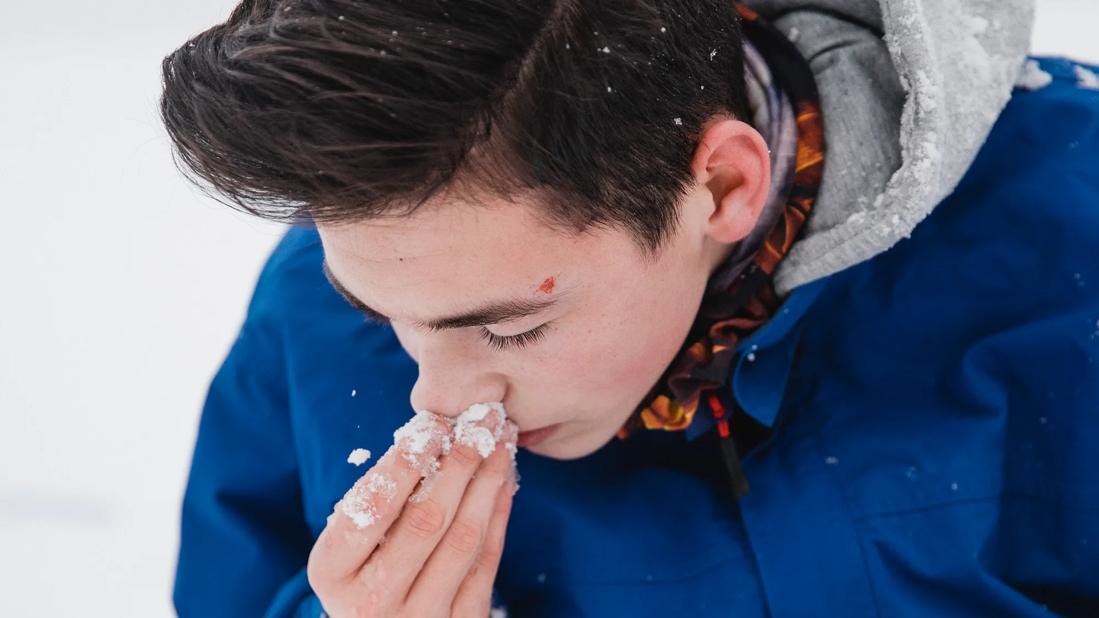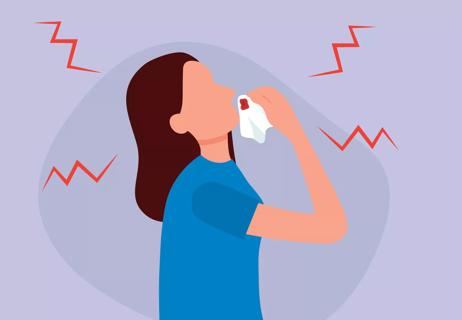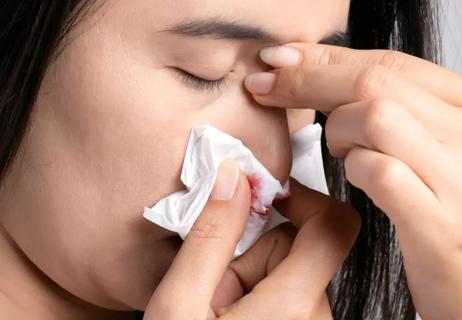Sit straight up, apply pressure, be patient — and don’t stuff it

Nosebleeds often seem to happen out of the blue, striking at random. All that blood can be scary for kids and adults alike. And while they’re common, there are simple steps you can take to help them stop.
Advertisement
Cleveland Clinic is a non-profit academic medical center. Advertising on our site helps support our mission. We do not endorse non-Cleveland Clinic products or services. Policy
Ear, nose and throat surgeon Mohamad Chaaban, MD, shares do’s and don’ts for stopping a nosebleed.
Yikes, here comes the blood! You’re panicking, and things are getting messy.
Sometimes, a nosebleed feels like it could last forever. But in reality, the average nosebleed doesn’t last more than 20 minutes. Be sure to call your healthcare provider if it does — or if you’re having them frequently, or if the blood flow is heavy.
Keep in mind: If this is a bloody nose related to an injury to your face, be sure to see a doctor right away to be evaluated.
Even for 20 minutes or fewer, a nosebleed can still be pretty alarming and irritating. Take the following steps to put an end to a nosebleed.
That’s right, the best thing to stop a nosebleed is to remain vertical.
“The first thing to do is sit upright (or to sit your child upright),” Dr. Chaaban says. “Either sit down or stand with your head bent forward slightly.” And no, you shouldn’t tip your head back (more on that in a moment).
If you happen to have an over-the-counter nasal decongestant (oxymetazoline or phenylephrine), you can spray it into your nose on the side that’s bleeding.
You’ll need an extra tissue for this one, just in case. As the blood vessels are located near your nostrils, apply firm pressure to the sides of your nose (not the bridge) — as though you were pinching your nose shut. You should be gently pinching the soft sides of your nose, just above your nostrils.
Advertisement
And now, we wait. “Keep the pressure for at least 10 to 15 minutes before checking to see if the bleeding has stopped,” Dr. Chaaban advises. Patience is key here — set a timer and sit tight. And don’t relieve pressure before the time is up to check, as you may restart the bleeding.
If the bleeding hasn’t stopped after 15 minutes, apply an ice pack or cold compress to the bridge of your nose, which can constrict the blood vessels and help bring the blood flow to a stop.
Any kind of bleeding can make anyone skittish. But try and stay calm as best you can.The more you panic, the longer it could take for the bleeding to stop — and the same is true if you’re a parent or caregiver dealing with a child’s nosebleed. If you seem chill, little ones are more likely to follow suit.
If you’re still bleeding at the 20-30-minute mark, it’s time to talk to a medical professional. “If you’ve followed all of these steps and the blood just keeps coming, reach out to your doctor or your child’s pediatrician for guidance,” Dr. Chaaban states.
Just as important as knowing what to do is knowing what not to do, even though they may seem like good ideas. But Dr. Chaaban sorts fact from fiction when it comes to treating a bloody nose.
Here are some actions to avoid:
After you’ve had a nosebleed, you want to be careful not to re-irritate your nose and start another. Here’s how to promote healing:
Advertisement
Even if your bloody nose isn’t the result of an injury, it can still be a red flag in some cases. It can also be a result of bleeding from larger blood vessels in the back of your nose that may require further management.
Persistent and recurring nosebleeds can be a sign of another health issue. If you get frequent nosebleeds, nosebleeds that just won’t stop or if your nosebleeds are accompanied by other symptoms, such as numbness or pressure in your face, make an appointment with an ear, nose and throat doctor to get it checked out.
Advertisement
Learn more about our editorial process.
Advertisement

Seek help if bleeding doesn’t stop or they’re interfering with your life

Use these quick fixes to stop nighttime nosebleeds

Humidifiers improve breathing, reduce lung problems

Tips for protecting yourself from common illnesses

Most recommended precautions center around minimizing bruising or swelling

Even one drink can have an impact on your cognitive function leading to slurred speech, blurred vision and impaired memory

Type 2 diabetes isn’t inevitable with these dietary changes

Applying a hot or cold compress can help with pain